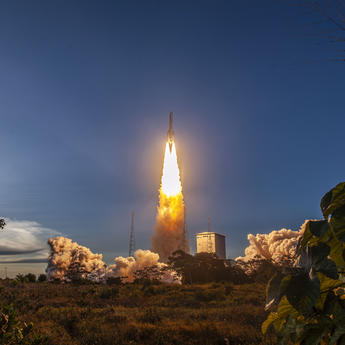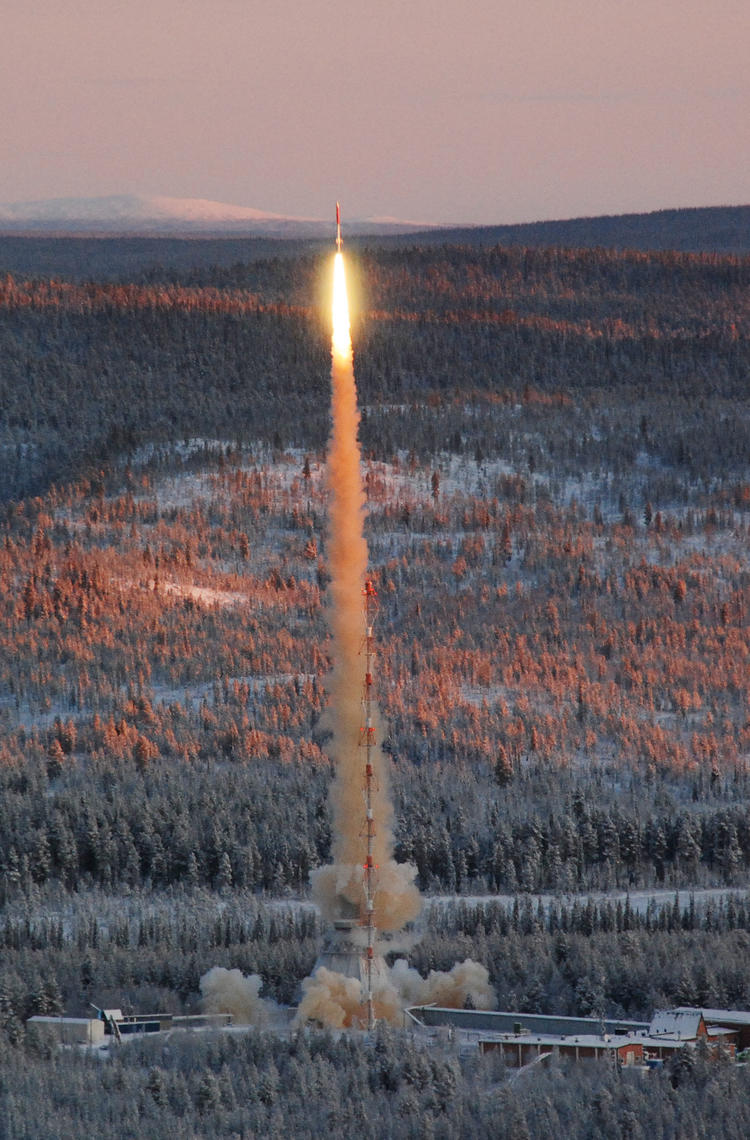21 February 2022 – Ahead of the upcoming launch, on 28th February 2022, of the TEXUS 57 sounding rocket, Programme Manager Andreas Schütte explains more about this long-lasting programme and its vital contribution to scientific research.
Andreas, can you please tell us what TEXUS is all about?
TEXUS (Technological Experiments in Zero Gravity) is the world's most successful and longest lasting sounding rocket programme – the first TEXUS rocket launched in December 1977. Sounding rockets – also known as research rockets – launch scientific and technological experiments to the edge of space before falling back to Earth. Put simply, TEXUS helps scientists conduct biological, material science and physical experiments under space conditions. The programme also plays an important role in preparing experiments for the International Space Station (ISS).
How often do TEXUS rockets take off?
On average, once a year. The rockets are launched from the Esrange Space Centre – an almost unknown location in the very north of Sweden, above the Arctic Circle. Here, the scientific payload can be easily recovered and returned to the research teams less than two hours after launch.
What does a TEXUS flight involve?
In ballistic flight a TEXUS rocket reaches a height of about 260 kilometres. The flight, from take-off to landing, takes about 15 minutes. For six minutes, an approximate weightlessness is reached, which is only about one ten thousandth of the Earth’s normal gravity. During the flight, the scientists can directly control and monitor their experiments from the ground using telecommand and video transmission. The data is collected during the flight by telemetry or after recovery of the payload.
The rocket’s payload then lands by parachute and is salvaged by helicopter with the support of Airbus and the Swedish Space Corporation, Esrange’s operator.
Tell us more about the next launch
TEXUS 57 – which, as the name suggests, is the fifty-seventh mission – is scheduled for launch on 28 February. It will have four experiments on board, located in autonomous modules within the rocket, one on top of the other. Customers include the European Space Agency and the German Aerospace Centre on behalf of various universities.
What is Airbus' contribution?
Airbus engineers from different disciplines develop, integrate and test the experimental equipment. In collaboration with customers and scientific teams, our engineers establish experimental concepts. Breadboard tests are conducted to support design decisions. Depending on the results, further tests may be required to determine or verify critical parameters of the experiment before launch. Design reviews with customers ensure that their requirements are fully met.
What else?
Finally, the experimental equipment is integrated, tested at various stages and verified. All this goes hand-in-hand with the development of the ground support systems needed to control the experiments during the test phase in Bremen and during the flight from Esrange.
Before transferring all flight hardware and ground systems to Esrange, we organise a flight system acceptance review with our customers, which also covers the contributions of our subcontractors: the service system (communication between the experiments and the ground station), the recovery system (parachutes), the rocket engines (solid propellant) and the readiness of the facilities at Esrange.
Why are we still doing microgravity tests with sounding rockets when the Airbus Bartolomeo platform on the ISS offers this possibility?
There are many different platforms for performing scientific or technological experiments in microgravity. Bartolomeo is an ideal platform for many applications that require extended microgravity conditions, and is delivering very interesting and important research. Nevertheless, there are many other fields of research where a short microgravity time provides excellent results.
Terrestrial options include sounding rockets, parabolic flights and drop towers – a ground-based structure used to produce a short period of microgravity for an object under study.
Numerous experiments onboard the ISS have actually gone through several pre-cursor missions on the ZARM Drop Tower, a microgravity laboratory in Bremen, parabolic and sounding rocket flights to determine the optimum design and the best parameters beforehand.
Many phenomena have been observed and proven on our sounding rocket flights with TEXUS and MAXUS, a larger research rocket that can carry a heavier payload and offers a longer period of microgravity. For our customers, these flights contribute to risk reduction, provide cost-efficient validation and deliver high-quality results.
Latest News
Continue Reading

Airbus ships fourth European Service Module for Artemis IV
Press Release
Space
Fourth European Service Module (ESM-4) is ready to leave Airbus’ facilities in Bremen, Germany, and be shipped to NASA’s Kennedy Space Center, Florida, USA
Sentinel-1D: the radar that never sleeps
Web Story
Space

Airbus-built SpainSat NG-II secure communications satellite successfully launched
Press Release
Space

Airbus, Leonardo and Thales sign Memorandum of Understanding to create a leading…
Press Release
Company

Tracking air pollution from space
Web Story
Space
